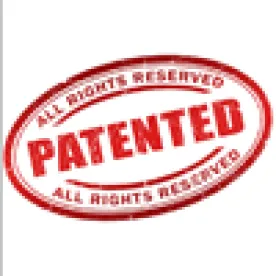On December 3, 2014, the Federal Circuit issued a decision in Par Pharmaceutical, Inc. and Alkermes Pharma Ireland Limited v. TWI Pharmaceuticals, Inc., agreeing with the district court’s analysis and conclusions on motivation to combine, reasonable expectation of success, and objective indicia of nonobviousness but vacating and remanding for further analysis on the issue of inherency.
Patent at Issue
Par obtained U.S. Patent No. 7,101,576 to a method of using megestrol nanoparticles to increase body mass in a human patient suffering from anorexia, cachexia, or loss of body mass, wherein after a single administration in a human subject, there is no substantial difference in the Cmax of megestrol when the formulation is administered in a fed versus a fasted state (“the food effect limitation”). The FDA approved Par’s New Drug Application for its megestrol nanoparticle formulation, Megace ES, and Par listed the ‘576 patent in the Orange Book. TWI filed an Abbreviated New Drug Application, asserting among other things that the claims of the ‘576 patent are invalid as obvious under 35 U.S.C. §103. Specifically, TWI argued that the food effect limitation was disclosed in the prior ar t under the principle of inherency. The district cour t agreed and held the ‘576 patent invalid as obvious.
The Federal Circuit’s Analysis
The Federal Circuit agreed that all elements of the claimed invention were disclosed in the prior ar t. However, the Federal Circuit disagreed with the district court that the food effect limitation was inherently disclosed in the art. In particular, the district court held that even though the prior art did not explicitly disclose the food effect differences as claimed, “[t]he claimed pharmacokinetic parameters with respect to a food effect . . . are inherent proper ties of the obvious nanoparticulate formulation.” The reduced food effect was thus “an inherent result” of nanosized megestrol “even if it was previously not known in the prior ar t that a food effect existed.”
The Federal Circuit has recognized that “inherency may supply a missing claim limitation in an obviousness analysis.” (Id. at page 14.) However, inherency cannot be based on what may happen but what must happen by a combination of prior art that purportedly will inherently have a proper ty recited as an affirmative limitation in a claim being examined for obviousness. (Id.) Thus, “if the disclosure is sufficient to show that the natural result flowing from the operation as taught would result in the performance of the questioned function, it seems to be well settled that the disclosure should be regarded as sufficient.” (Id.)
The Federal Circuit acknowledged that “it may be true that a reduction in particle size naturally results in some improvement in the food effect, [but] the district court [has] failed to conclude that the reduction in particle size naturally results in “no substantial difference” in the food effect.” (Id.) Thus, the panel vacated the district court’s inherency analysis and remanded.
Is Inherent Obviousness Still Alive?
Yes. It appears that on remand the district court is likely to hold that the reduction in particle size results in “no substantial difference” in the food effect and that the claimed pharmacokinetic proper ties with respect to a food effect, are inherent proper ties of the obvious nanoparticulate formulation claimed by the ‘576 patent. In fact, the ‘576 patent itself states that this is the case. (The ‘576 patent, col. 8, line 50 to col. 9, line 17.) If, on remand, Par argues a nanoparticle megestrol acetate formulation within the claims does not necessarily exhibit the food effect limitation, Par runs the risk of a lack of enablement attack on the claims. This case is another example of the tension that could arise between obviousness and enablement.





 />i
/>i

